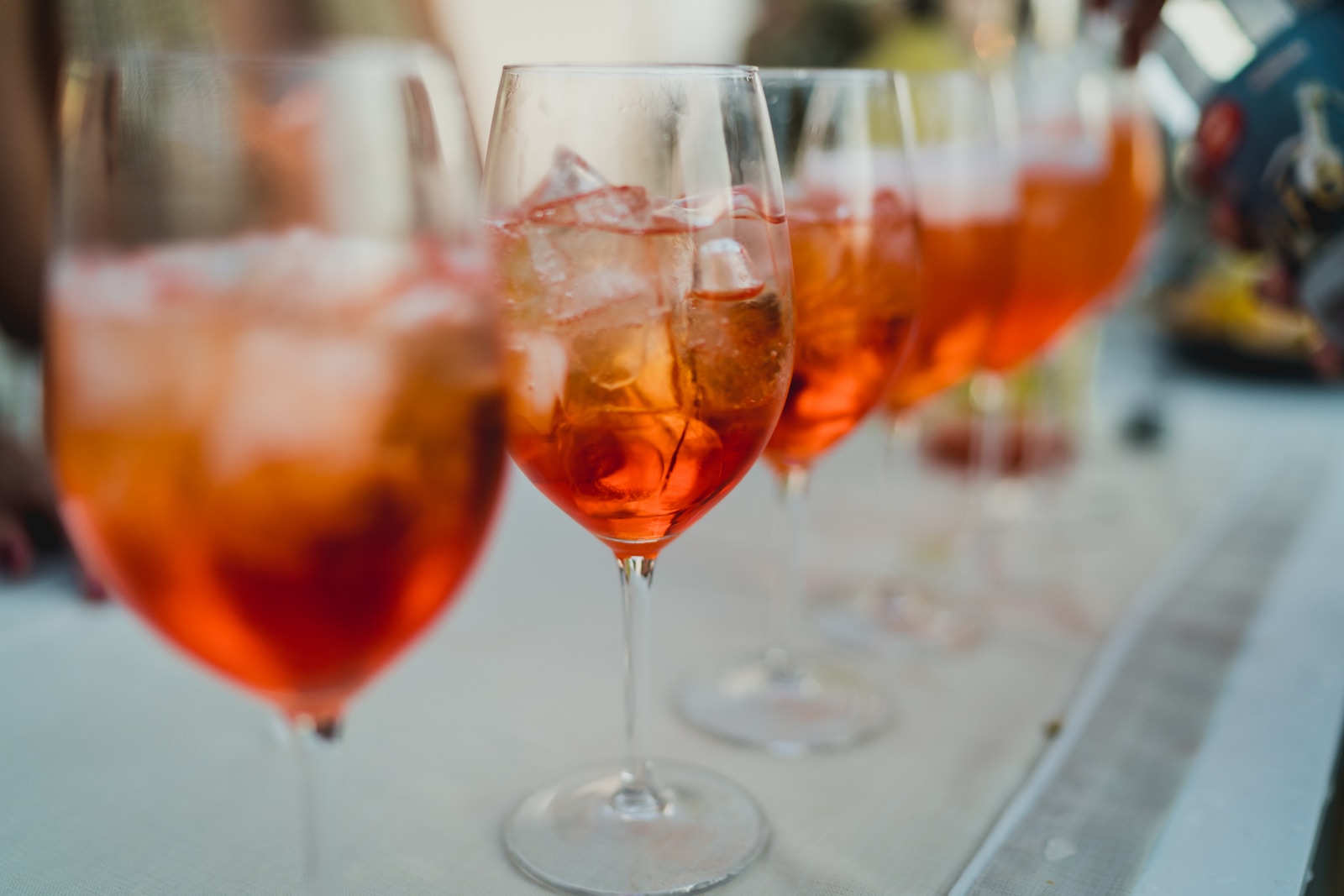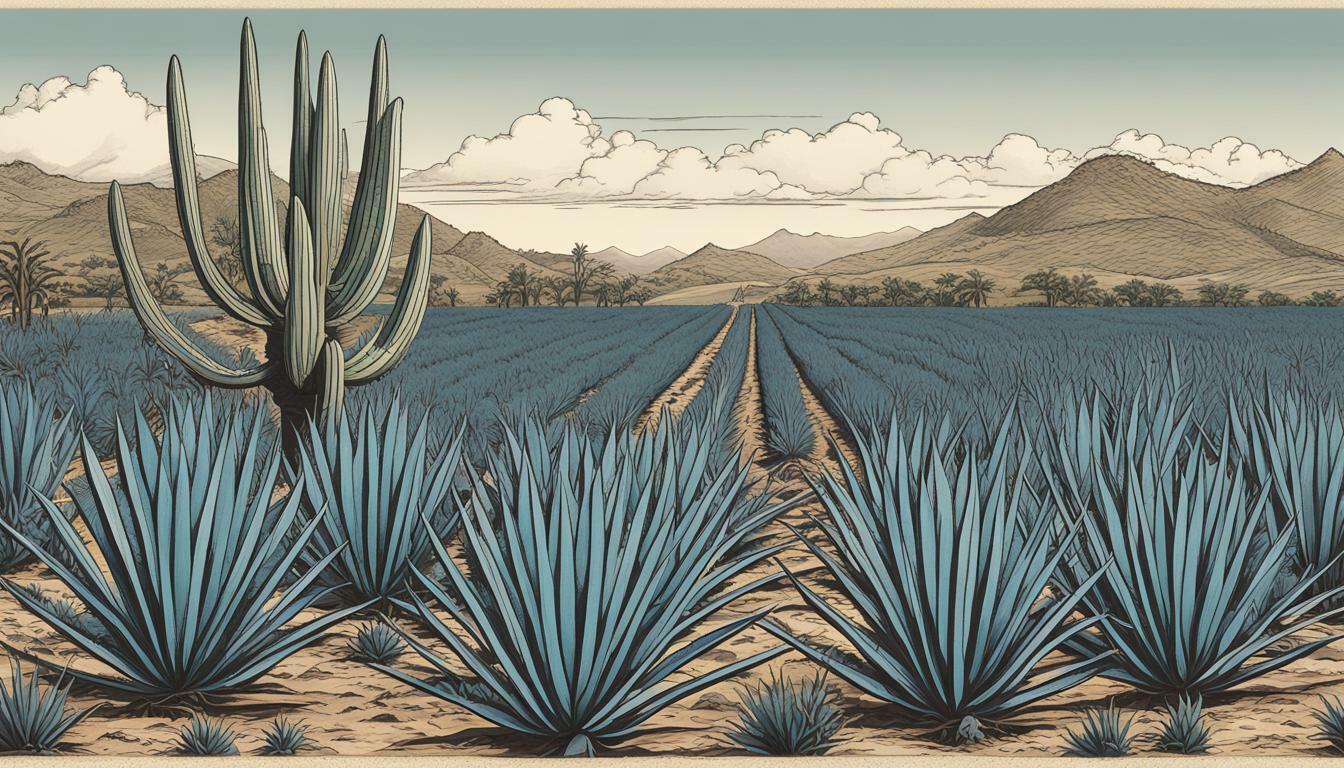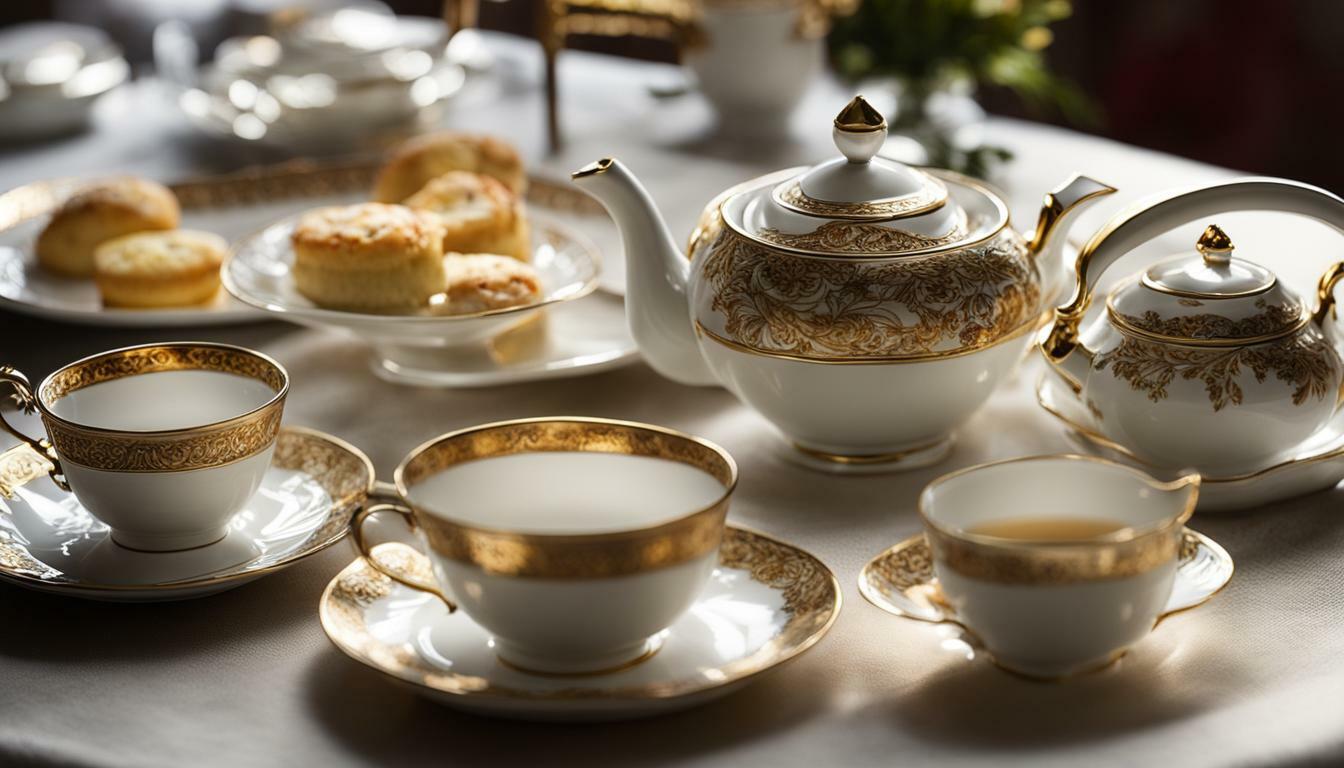Italy is known for its delicious food, charming culture, and of course, its cocktails. Two beloved Italian cocktails that have been making waves in bars around the world are the Negroni and the Aperol Spritz. While both are refreshing and incredibly tasty, they have distinct differences that set them apart from each other. In this article, we’ll explore the contrast between the Negroni and the Aperol Spritz, understanding the characteristics of each and what sets them apart.
Key Takeaways
- There are distinct differences between the Negroni and the Aperol Spritz, two beloved Italian cocktails
- The Negroni is known for its bold, bitter flavor, while the Aperol Spritz is sweeter and more refreshing
- The choice and proportion of ingredients contribute to the unique taste of each cocktail
- The serving styles and presentation of each cocktail are also different, with distinct glassware and garnishes
- There are popular variations and adaptations of both cocktails, offering new experiences for cocktail enthusiasts
What is a Negroni?
A Negroni is a classic Italian cocktail that originated in Florence in the early 20th century. It is made up of three main ingredients: gin, Campari, and sweet vermouth. These ingredients are typically stirred together over ice and served in an Old Fashioned glass, garnished with an orange peel.
One of the key characteristics that sets Negroni apart from other cocktails is its balance of bitter and sweet flavors. The bitterness of the Campari is balanced out by the sweetness of the vermouth, with the gin adding a complex botanical flavor profile.
The exact origins of the Negroni are somewhat unclear, but the most widely accepted story is that it was invented when Count Camillo Negroni asked a bartender to make his Americano cocktail (Campari, sweet vermouth, and soda water) stronger by replacing soda water with gin. The result was the Negroni, which quickly became popular in Italy and around the world.
Today, Negroni variations and adaptations are popular among cocktail enthusiasts, with bartenders experimenting with different spirits and adding their own twists on the classic recipe.
What is an Aperol Spritz?
An Aperol Spritz is a popular Italian cocktail that is often enjoyed as an aperitif. It is made with Aperol, a vibrant orange Italian liquor, Prosecco, and soda water. The drink is typically served in a wine glass, with a slice of orange as a garnish.
The Aperol Spritz has a distinct flavor profile, with a balance of bittersweet and refreshing notes. Its sweetness comes from the Aperol, while the Prosecco adds a light and bubbly texture to the drink. The soda water gives the cocktail a slight effervescence, making it a perfect drink for a hot summer day.
The Aperol Spritz has become a favorite among cocktail enthusiasts, especially in Italy, where it originated. Its popularity has grown significantly in recent years, making it a common sight in bars and restaurants around the world.
Key distinctions between Negroni and Aperol Spritz
While both the Negroni and the Aperol Spritz are Italian cocktails, they have distinct characteristics that set them apart. The Negroni is made with gin, sweet vermouth, and Campari, while the Aperol Spritz is made with Aperol, Prosecco, and soda water.
The Aperol Spritz is known for its bittersweet and refreshing taste, while the Negroni is often described as robust and complex. Additionally, the Negroni is typically served in a rocks glass, without any added carbonation, while the Aperol Spritz is served in a wine glass, with soda water added to give it a fizzy texture.
Understanding the characteristics of both cocktails is essential for making an informed choice about which drink to order and enjoy.
Flavor Profiles of Negroni and Aperol Spritz
The flavor profiles of a Negroni and an Aperol Spritz are vastly different, which is one of the key distinctions between the two cocktails. Both drinks are bitter, but the bitterness in a Negroni is considerably stronger compared to the Aperol Spritz. One of the reasons for this difference is that the Negroni contains gin, which has a strong botanical taste that balances well with the bitter notes of Campari and sweet vermouth.
On the other hand, an Aperol Spritz has a more subdued bitterness, thanks to the presence of Aperol, which has a lower alcohol content and is sweeter than Campari. The addition of prosecco to the cocktail also adds mild sweetness and effervescence, further balancing the bitterness in the drink.
The flavor of a Negroni is also heavily influenced by the gin used in the cocktail. London dry gin is the most common type of gin used in a Negroni, which is known for its juniper-forward taste and citrus undertones. Other types of gin, such as Old Tom gin, can be used to create unique flavor profiles in the cocktail.
Meanwhile, a key component of the Aperol Spritz is the use of prosecco, an Italian sparkling wine. Prosecco has a mild sweetness and acidity that pairs well with the bitterness of Aperol, making it a perfect ingredient for the cocktail.
Overall, the flavor profiles of a Negroni and an Aperol Spritz differ greatly, making them two distinct cocktails that cater to different tastes. A Negroni is a bold, complex drink with a strong bitter taste, while an Aperol Spritz is a lighter, sweeter cocktail with a subdued bitterness.
Comparing the Ingredients
While both Negroni and Aperol Spritz are Italian cocktails, their ingredients differ greatly. Negroni is made with equal parts of gin, Campari, and sweet vermouth. In contrast, Aperol Spritz contains Aperol, Prosecco, and soda water.
The gin used in a Negroni can vary, but it should be of good quality. Its botanicals blend with the bitter Campari and sweet vermouth to give the drink a complex flavor profile. The Campari is a crucial ingredient in a Negroni, giving it its distinct bitter taste.
On the other hand, Aperol is the key component in an Aperol Spritz, providing a bright, herbaceous, and slightly bitter flavor. Prosecco is added to balance the bitterness and give the cocktail a light and effervescent feel. Finally, soda water is added to make the drink refreshing.
While both cocktails contain bitter and sweet components, the choice and proportion of ingredients are what set them apart. The Negroni has a stronger and more complex flavor profile, while the Aperol Spritz is lighter and more refreshing.
Table: Ingredients for Negroni and Aperol Spritz
| Negroni | Aperol Spritz | |
|---|---|---|
| Gin | 1 oz | |
| Campari | 1 oz | 2 oz |
| Sweet Vermouth | 1 oz | |
| Aperol | 2 oz | |
| Prosecco | 3 oz | |
| Soda Water | 1 oz |
Serving Styles and Presentation
Aside from the difference in taste, the serving styles and presentation of a Negroni and an Aperol Spritz are also distinct.
A Negroni is typically served in a rocks glass, filled with ice and garnished with a twist of orange peel. The deep, reddish color of the cocktail is a feast for the eyes and the citrus aroma adds a refreshing touch to the experience.
An Aperol Spritz, on the other hand, is usually served in a wine glass, topped with a splash of soda water and garnished with a slice of orange. The light, bubble-filled drink boasts a bright orange color, which is sure to catch anyone’s attention.
Ultimately, the presentation of each cocktail is part of the overall experience and adds to the enjoyment of the drink.
Glassware
The choice of glassware used for these cocktails also contributes to their distinctiveness. A rocks glass with its short, wide shape provides a perfect vessel for the Negroni. Its larger size allows for the inclusion of ice, while the wide surface area exposes the vibrant color and aromatic notes of the drink.
On the other hand, the Aperol Spritz is best served in a wine glass, with its tall, slender shape. The size of the wine glass allows more space for the soda water to fizz and the orange slice garnish to float, creating a visually stunning drink.
Garnishes
Both cocktails come with their own choice of garnishes, which add an extra flair to the presentation of the drink. The Negroni’s orange twist garnish offers a zesty aroma that accentuates the drink’s citrus notes.
Meanwhile, the Aperol Spritz’s orange slice garnish adds a pop of color to the drink and enhances its tangy orange flavor.
Overall, the choice of glassware and garnishes for each cocktail serves to enhance the drinking experience and make each cocktail a unique and enjoyable affair.
Popular Variations and Adaptations
Like any classic cocktail, a Negroni and Aperol Spritz have gone through various changes and adaptations over time. Bartenders around the world have experimented with different ingredients and techniques, creating unique twists on the original recipes.
One popular variation of the Negroni is the Boulevardier, which substitutes bourbon for gin. Another variation is the White Negroni, which uses Lillet Blanc and Suze instead of Campari and sweet vermouth. The result is a lighter and more floral take on the classic.
As for the Aperol Spritz, variations include using Prosecco instead of soda water, adding different fruits or herbs as garnishes, or even incorporating bitters to balance the sweetness.
One popular adaptation of both cocktails is the use of infused spirits. Bartenders infuse gin or Campari with different flavors such as grapefruit, lavender, or even bacon, to add a unique twist to the drink.
Whether you prefer the classics or enjoy experimenting with variations, a Negroni and Aperol Spritz have something for everyone.
Conclusion
After exploring the characteristics, flavor profiles, ingredients, serving styles, and popular variations of a Negroni and an Aperol Spritz, it’s clear that these two Italian cocktails have distinct differences that set them apart.
The Negroni, with its rich and complex flavor profile and bold bitterness, is a time-honored cocktail that is not for the faint of heart. On the other hand, the Aperol Spritz, with its delicate sweetness and lightness, is a refreshing and approachable sip.
While they may share some common ingredients, the proportions and serving styles of a Negroni and an Aperol Spritz make all the difference in their taste and overall experience. Whether you prefer a Negroni or an Aperol Spritz, there’s no denying the unique charm of these two iconic Italian cocktails.
By understanding the key distinctions and exploring the contrast between a Negroni and an Aperol Spritz, you can appreciate the artistry and complexity that goes into crafting these beloved drinks. So next time you’re out for a night on the town, consider trying both and experiencing the best of both worlds!
FAQ
Q: What is the difference between a Negroni and an Aperol Spritz?
A: A Negroni is a classic Italian cocktail made with equal parts gin, sweet vermouth, and Campari, while an Aperol Spritz is a refreshing drink made with Aperol, prosecco, and soda water. The main difference is in the ingredients and flavor profile.
Q: How do you make a Negroni?
A: To make a Negroni, mix equal parts gin, sweet vermouth, and Campari in a glass filled with ice. Stir gently, then strain into a chilled glass. Garnish with an orange twist.
Q: What are the ingredients of an Aperol Spritz?
A: An Aperol Spritz is made with 3 parts prosecco, 2 parts Aperol, and 1 part soda water. It is typically served over ice in a wine glass and garnished with an orange slice.
Q: How do the flavor profiles of a Negroni and an Aperol Spritz differ?
A: A Negroni has a bittersweet and strong flavor, with the combination of gin, sweet vermouth, and Campari creating a complex taste. An Aperol Spritz, on the other hand, is lighter and more refreshing with its citrusy and slightly bitter notes.
Q: What are the key ingredients in a Negroni?
A: A Negroni is made with gin, sweet vermouth, and Campari. The choice and quality of these ingredients greatly impact the taste of the cocktail.
Q: How is an Aperol Spritz traditionally served?
A: An Aperol Spritz is traditionally served over ice in a wine glass. It is topped with prosecco and a splash of soda water, and garnished with an orange slice.
Q: Are there any popular variations or adaptations of a Negroni or an Aperol Spritz?
A: Yes, there are many variations and adaptations of both cocktails. Some popular ones include using different types of gin or vermouth in a Negroni, or adding additional fruits or herbs to an Aperol Spritz for a twist on the classic recipe.
 Skip to main content
Skip to main content


